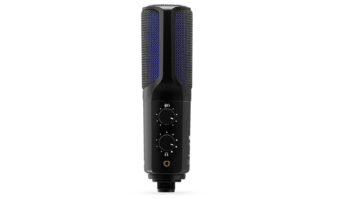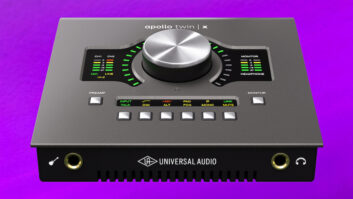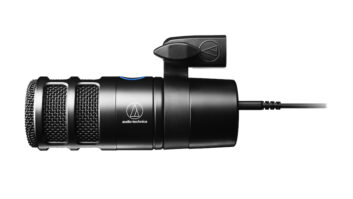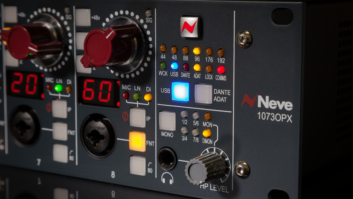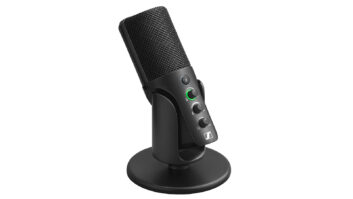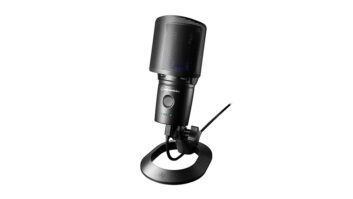Craig Anderton

In our computer-based world, every now and then, there’s a wrenching transition. Remember System 9 to OS X? 32- to 64-bit operation on Windows? Those NuBus and ISA cards that became doorstops when PCI appeared?
We’re on the cusp of two transitions, both of which involve interfaces and bandwidth. We covered the extreme range of interfaces last January (as well as issues with USB 3.0), but that discussion takes on new meaning with the push for a hi-res audio format— the topic of last month’s column. And all of this relates back to ports.
When computers were young, ports were simple: There was a video port for your monitor, and a port for utilitarian but slow items like keyboards, printers, modems, etc. When MIDI appeared, it took Opcode to figure out how to make Mac serial ports work to accommodate MIDI; over in Windows-land, MIDI worked well, but getting multiple MIDI devices to work was problematic due to short-sighted port limitations.
Finally, ports became fast enough to accommodate video cameras, fast hard drives, and yes, audio interfaces capable of streaming lots of data. And as more pros see higher sample rates on the horizon, there’s been chatter about the need to upgrade audio interfaces to handle the extra bandwidth. But what port protocol is the best, and most future-proof, choice?
This is a subject of endless (and often meaningless) debate, much like Mac vs. Windows. What’s more, the goal posts are constantly moving. Back when CPUs had less power, FireWire’s separate hardware chip set meant it could take care of its own housekeeping—unlike USB, which had to piggyback on the host CPU. Yet eventually, computers became sufficiently powerful that USB’s needs became essentially negligible, and the low cost of implementing it became an advantage.
And of course, there are arguments about speed—which are mostly theoretical. For example, the stats say USB 2.0 can do 480 mbps transfers, while FireWire 400 can do only 400. So USB 2.0 is faster, right? It is indeed for data bursts, but for sustained transfers, FireWire is faster—and streaming data is at the heart of both video and audio. What’s more, FireWire is full-duplex while USB is half-duplex. This is basically a two-lane vs. one-lane road situation: one car won’t have speed issues traveling on either road, but if there’s two-way traffic, the two-lane road comes out ahead.
However before deciding that FireWire is a better choice, first you have to find a computer with a FireWire port—an increasingly difficult quest, particularly with laptops. You can always add a FireWire card, but then you need to find a computer with enough card slots. And with USB 3.0 gaining traction—which is way faster than FireWire 800 (sometimes) or at least equivalent (sometimes)—there’s always the concern USB 3.0 is on the ascendancy while FireWire is in its twilight years.
Try to glean info from the web about speeds in the real world, and you’ll find little that’s definitive because of those darn moving goal posts. One site said USB 3.0 and Thunderbolt were equally fast when transferring files—but that was to a hard drive. With an SSD drive, Thunderbolt can pretty much smoke anything. Besides, any system bottlenecks often exist outside of the port, like within the computer, a peripheral or device drivers.
So ignore the web, the naysayers and the fanbois of various protocols—the reality is that you’re basically okay no matter what you do. If you choose USB, with rare exceptions, anything USB 2.0 will work with USB 3.0 and by definition anything 3.0 does (should) work, so you will (should) be future-proof for quite some time. If you choose FireWire 400 or 800, even though FireWire ports may be getting harder to find, cards and adapters remain viable. Thunderbolt-to-FireWire and USB adapters exist, so even if Thunderbolt takes over the world tomorrow, you should be able to use the peripherals you have today. There are even reports of using FireWire devices with Thunderbolt-to-FireWire adapters connected to Macs running Boot Camp.
Still, all of this has to be qualified with “in theory.” Some older devices that should work are broken, and will likely never be fixed. There are issues with how much power devices can draw from a port. Thunderbolt 2 is emerging. And at what point does a house of cards with adapter cables, translators and cards start to fall apart?
Contemplate the situation with ports long enough, and you just might find yourself wishing for a different kind of port altogether…or maybe an Armagnac.

